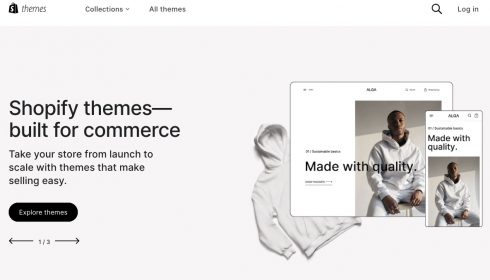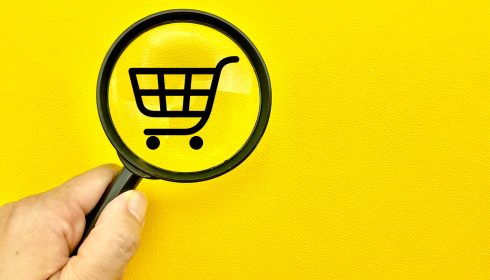The basics of cross-border EC! Cardboard and strength

Hello, my name is Eugene and I am a consultant.
As cross-border e-commerce (EC) is gaining momentum, it is very important to choose the right cardboard boxes to ensure reliable delivery of products. In this article, we will explain the strength of cardboard boxes and discuss cardboard boxes recommended for international shipping.
What is a cardboard flute?
There are three main parts to corrugated cardboard. The front liner (the outer flat part), the back liner (the inner flat part), and the flutes (the corrugated paper, the core). The flutes are the corrugated paper sandwiched in the center of the corrugated cardboard and have a significant impact on the cardboard's thickness, strength, durability, and cushioning properties
Types of cardboard flutes
JIS (Japanese Industrial Standards) specifies four types of flutes: A, B, C, and E. There are also F, G, and W flutes. Other flutes such as F, G, and W are also available, but we will introduce the four JIS specified flutes in this issue.
A-flute (symbol: AF)
JIS definition: A corrugated corrugated fiberboard with 34 ± 2 corrugations per 30 cm.
Typical corrugation height: 4.65 ± 0.15 mm
Uses: Because it has a certain degree of strength, it is often used for moving and for exterior applications. It is the most used corrugated cardboard flute in Japan.
B-flute (symbol: BF)
JIS definition: A corrugated corrugated fiberboard with 50 ± 2 corrugations per 30 cm.
Typical corrugation height: 2.65 ± 0.15mm
Uses: Usually about half the thickness of A-flute, making it a thinner corrugated cardboard flute. Therefore, it can be utilized for interior boxes and packing lightweight goods.
C-flute (symbol: CF)
JIS definition: A type of corrugated corrugated board with 40 ± 2 corrugations per 30 cm.
Typical corrugation height: 3.65 ± 0.15mm
Uses: This corrugated cardboard flute is gradually becoming popular because it is 20% thinner than A-flute, while its strength is almost equal to that of A-flute. Recommended for those who are looking for corrugated cardboard for exterior use and are concerned about storage space.
E-flute (symbol: EF)
JIS definition: A type of corrugated corrugated board with 93±5 corrugations per 30 cm.
Typical corrugation height: approx. 1.1 mm
Uses: This is the thinnest corrugated cardboard flute with the most number of tiers among the four types. Because it is a thin flute, it offers little or no protection when used for exterior applications. Therefore, it can be used as corrugated cardboard for interior applications, taking advantage of its thinness.
Types of cardboard liners
As mentioned earlier, there are three main parts to corrugated cardboard. The front liner (the outer flat part), the back liner (the inner flat part), and the flutes (the wavy paper, the core). There are several different types of that liner as well. The five most commonly seen types of liners are C5, C6, K5, K6, and K7. K stands for "kraft," which is a liner made of 70% recycled paper plus a material (such as virgin pulp) to increase strength; C stands for "jute," which is a 90%+ recycled paper; and K7 is a liner made of recycled paper, which is a 90% recycled paper.
Strength of liner
K is stronger than C. The higher the number that comes after the letter, the higher the strength (GSM, weight per square meter). Remembering this relationship allows us to compare strengths, so we can tell the strength at a glance.
C5 Liner
Recycled paper content: 90% or more
GSM (weight per square meter): 160
Applications: Packing of lightweight materials, dividing plates
C6 Liner
Recycled paper content: 90% or more
GSM (weight per square meter): 200
Applications: Packing of lightweight materials.
K5 Liner
Recycled paper content: 70% or more
GSM (weight per square meter): 180
Applications: Although slightly lower than C6 GSM, this liner offers higher strength due to its lower content of recycled paper. For small or moderately heavy items.
K6 Liner
Recycled paper content: 70% or more
GSM (weight per square meter): 210
Uses: This is a popular choice among high-strength liners. In an easy-to-imagine way of describing it, it is so strong that it does not distort even when other cardboard boxes are stacked on top of it. It is ideal for products that require heavy weight and durability.
K7 Liner
Recycled paper content: 70% or more
GSM (weight per square meter): 280
Applications: This is a high-strength liner that is mostly made to order and rarely seen. This liner is used for heavy or valuable products because of its high strength but also high price.
Cardboard used for cross-border e-commerce is Zubari!
In conclusion, if i could only recommend one cardboard box to use for cross-border e-commerce, i would recommend K6 from A-flute. This is because it is reasonably priced and its strength can be adequately guaranteed. Of course, you don't have to limit yourself to just one. The important point is that you can switch from one to another depending on your needs. Choose the appropriate corrugated cardboard in light of your product and environment. (From my point of view as a cardboard fan, this is what makes cardboard so appealing)
However, it is definitely safer to ensure strength with regard to cross-border shipping. The reason is that the cardboard used in cross-border e-commercemust be strong enough to overcome numerous challenges. Irresistible risks such as long-distance deliveries, drops and falls, changes in temperature and humidity, and human factors such as loading and unloading and the way they are handled during transportation are also major safety risks. Please note that if you choose cheap, thin, or unstrong cardboard boxes for style, space, cost, or other reasons, you will be in big trouble.
Achieve results with "minimum investment and effort.
Cross-border e-commerceOne-stop shop for services



